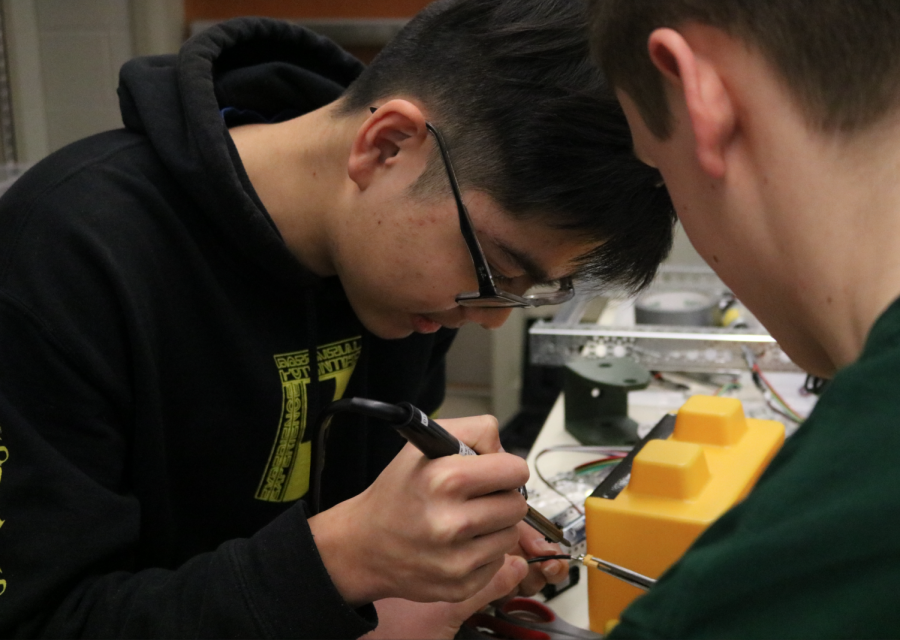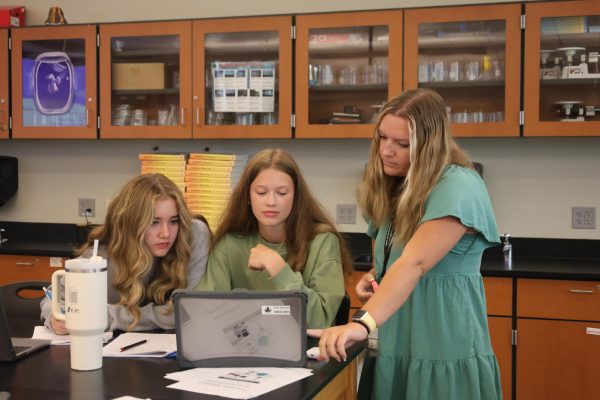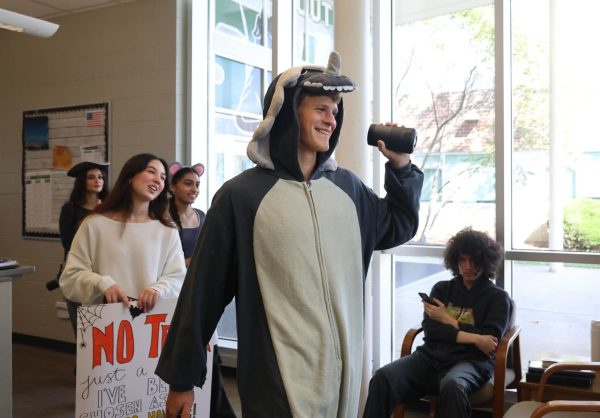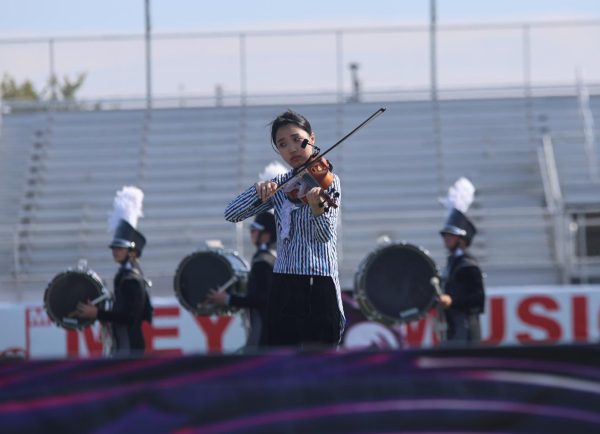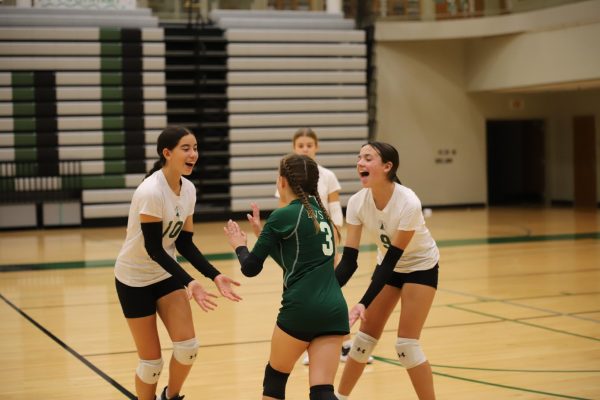Programming your future: drafting III students discuss course’s potential career benefits
Senior Andrew Jin focuses on repairing the robot in his drafting class.
In high school, there are endless numbers of athletic and extracurricular activities to explore. While some may be more popular than others, one that often goes unnoticed is robotics. This activity combines mathematics, engineering, physics, electronics and a lot of creativity. Sophomore Avery Boutte said she has been vaguely interested in robotics since middle school.
The prerequisites for robotics include drafting I and drafting II, in which students are taught the basics of engineering and architecture that prepare them for drafting III where they eventually move to the competitive level. Many students who participate in robotics in high school move on to use their prior knowledge to become successful architects or follow other engineering-based career paths.
“Originally, my interest in it sparked when I heard people keep saying that STEM and engineering are where all the money is, and robotics is definitely the coolest part of that,” Boutte said.
The objective of the competition usually includes easy tasks for the robot to complete. Senior Andrew Jin is an active member of the club and said his favorite part of competing is getting to drive the robot.
“Every year they have a different game, so this year the robot was meant to move blocks on to a platform and stack them as high as possible,” Jin said. “I’ve learned a lot of things from robotics, many of which I would’ve never known if I hadn’t taken the class.”
Along with the competitions, the students enrolled in the class are expected to complete a series of in-class experiments week-to-week that teaches them more about the machinations of the robots and how to control them. Drafting II student, sophomore Cullen White says he is hoping to join robotics next year and is eager for what it can contribute to his high scho ol experience.
“I’ve always been interested in engineering and math, so finding an activity that allows me to pursue both of those things is really cool to me,” White said. “I know a bunch of the com petitions offer money to the winning te ams plus it looks great on college apps.”
Jin said that the most stressful part about the competitions are the time crunch. It is important to be able to express creativity with the robots that are functional and time-efficient.
“I always try to keep my designs super simple because normally the more complicated it becomes, the less successful the robot will be.”
Along with all of the academic benefits and scholarship opportunities it provides, another important aspect of Robotics is learning to develop teamwork. Without one person the whole thing could be thrown off.
“I’ve actually ended up making a couple of friends from the class that make it way more exciting when we go to our competitions,” Boutte said. “ You really have to have good communication, and being able to work with others on a shared goal is a great skill that Robotics has given me great experience with.”
of engineering and architecture that prepare them for Drafting 3 where they eventually move to the competitive level. Many students who participate in robotics in high school move on to use their prior knowledge to become successful architects or follow other engineering based career paths.
“I can’t exactly remember when I decided to go into drafting but I am very excited that I made that decision,” White said. “ I would highly recommend it to any student that doesn’t really know what they want to do with their life because it helps me tremendously in school and is such a fun class.”
Robotics provides a safe environment for many students to explore an activity that also ties directly in with a lot of academics and creativity.
“As of now my future plans are to join the Navy,” Jin said. “I think that being in Robotics has in some way prepared me for that because it really promotes teamwork and being dependable, and without it, I don’t think I would be as ready.”


